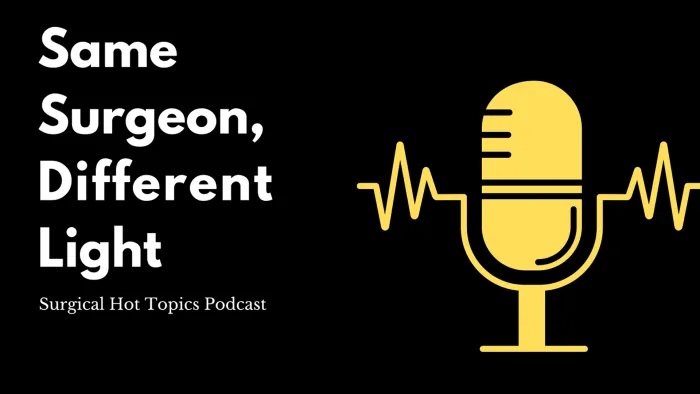STS News, Fall 2020 — Through its charitable arm, The Thoracic Surgery Foundation (TSF), the Society grants several awards and scholarships each year that support research and education in cardiothoracic surgery and advance treatment options for patients with heart, lung, and other chest diseases.
One such award is the TSF Research Award, which offers operational support for original research efforts by early career cardiothoracic surgeons. Recipients are awarded up to $40,000 per year for 2 years.
In 2019, Arman Kilic, MD, from the University of Pittsburgh in Pennsylvania, received the award, which he’s currently using to research artificial intelligence (AI) and machine learning in cardiothoracic surgery in the hope of improving risk prediction and patient outcomes.
AI and Its Place in CT Surgery
AI is part of a growing field that incorporates a variety of algorithms to model data and predict outcomes. Machine learning is a form of AI that refers to the ability of systems to learn from data, identify patterns, and automate analytic model building.
According to Dr. Kilic, there is a huge and largely untapped potential for both in clinical medicine. He has a longstanding interest in clinical risk modeling and big data, and the rapidly expanding application of AI and machine learning to health care spurred his interest in applying these tools to cardiac surgery, where risk modeling plays an important role.
The alignment between Dr. Kilic’s research background and experience, and the growing potential of AI in medicine was further augmented by the collaborative environment in which Dr. Kilic found himself. “I’ve been fortunate to have world-class collaborators who are internationally recognized experts in AI,” he said.
Arman Kilic, MD, received the TSF Research Award in 2019.
Risk prediction in adult cardiac surgery is important because it can have profound implications. For example, the current STS National Database risk models are able to accurately state that 10% of a certain population will have operative mortality, but cannot identify specifically which patients are included in that percentage, Dr. Kilic explained. This is an area in which AI and machine learning may be able to make a difference.
This research examines machine learning algorithms to help identify risk prediction in adult cardiac surgery. Dr. Kilic said he hopes that, through the use of machine learning, surgeons will be able to provide individualized counseling to cardiac patients and determine whether there are more sophisticated methods of risk modeling in adult cardiac surgery.
Dr. Kilic envisions AI and machine learning impacting cardiothoracic surgery in several other ways as well, particularly how it relates to predictive analytics, automated imaging interpretation, and natural language processing.
According to Dr. Kilic, the ability to improve the predictive performance of imaging tests using AI and machine learning will be worthwhile. Chest x-rays, echocardiograms, and angiography routinely are used in cardiothoracic surgery, thus the ability to develop AI algorithms and software to interpret these representations with acceptable accuracy and improved efficiency would be appealing, especially from a triaging perspective. “There would likely be financial, logistical, and patient care benefits,” he said.
In the project’s first year of research, the team has collected and analyzed data from more than 11,000 patients undergoing cardiac surgical operations. The initial findings culminated in a manuscript published in The Annals of Thoracic Surgery, but more is to come.
“We continue to work on refining and working with these algorithms, and applying them to various outcomes,” Dr. Kilic said. The STS National Database—considered the gold standard in clinical outcomes registries—has served as a major data source for subsequent research.
Importance of TSF Award
Being awarded the TSF Research Award has played an important role in helping Dr. Kilic develop his research career.
“It’s provided the funds and support to lay the groundwork for my research,” he said. “And it’s allowed me to initiate, not just the funded project, but other research projects, as well. This award not only allowed me to compile preliminary data, but perhaps, more importantly, helped solidify collaboration with AI experts and national leaders in cardiothoracic surgery.”
Dr. Kilic encourages other cardiothoracic surgeons to apply for the TSF awards and scholarships. “This type of funding and support can be integral when trying to initiate research projects or focus, and it provides you recognition in the world of cardiothoracic surgery,” he said. “It’s a premier funding mechanism for thoracic surgery, and in that focused space, it gives you recognition among your peers.”
For more on the TSF awards program, visit thoracicsurgeryfoundation.org/awards.
Double Your Impact: Donate to TSF Today
The Thoracic Surgery Foundation (TSF) 2020 Surgeon Match Challenge is under way, and—to date—$70,311 has been raised toward research, education, and philanthropic initiatives that advance cardiothoracic surgery.
For every dollar donated by surgeons during the challenge, STS will match contributions up to $200,000.
So far this year, the Society’s charitable arm has awarded approximately $1.1 million in funding to support surgeon-scientists in cardiothoracic surgery.
Award recipients are investigating topics such as the predictive utility of machine learning algorithms in adult cardiac surgery, functionality of T cells in advanced lung cancer, and sphingosine-targeted therapies in heart transplants. They’re training with experts to learn new skills, including robotic esophageal surgery, cone repair, valve sparing root replacement, the Bentall procedure, and complex tracheal surgery.
The funding also has allowed surgeons to provide lifesaving care to underserved patients in developing countries, including Armenia, Honduras, India, Kenya, Nepal, Nigeria, Pakistan, and South Africa.
In addition to matching surgeon donations, the Society covers all of TSF’s administrative expenses so that 100% of each donation is applied to award programs. Plus, TSF donations are tax-deductible to the extent permitted by law.
If you have not given to the Foundation recently, please consider a gift at this time when your donation will have double the impact. For more information, visit thoracicsurgeryfoundation.org/donate.
